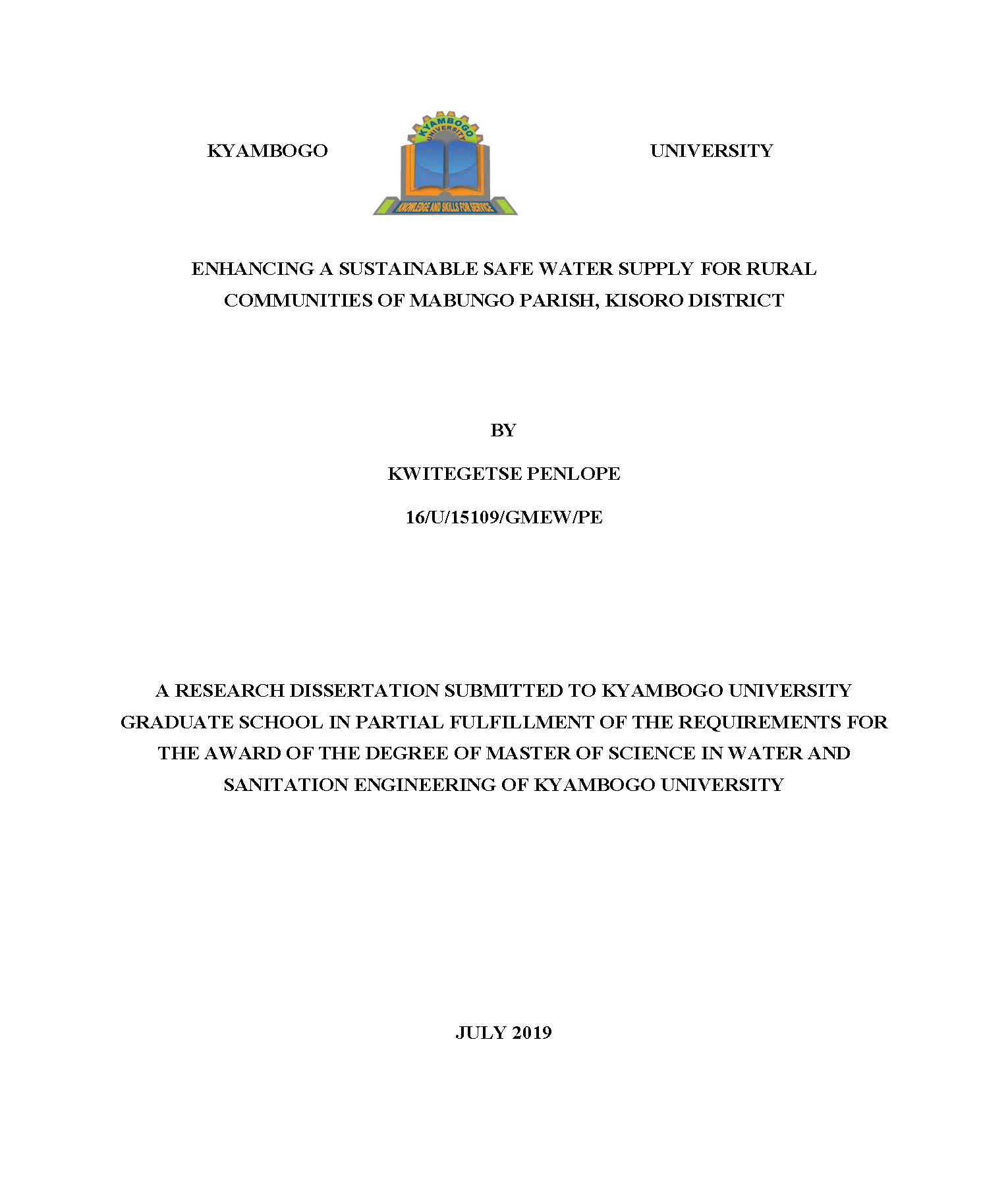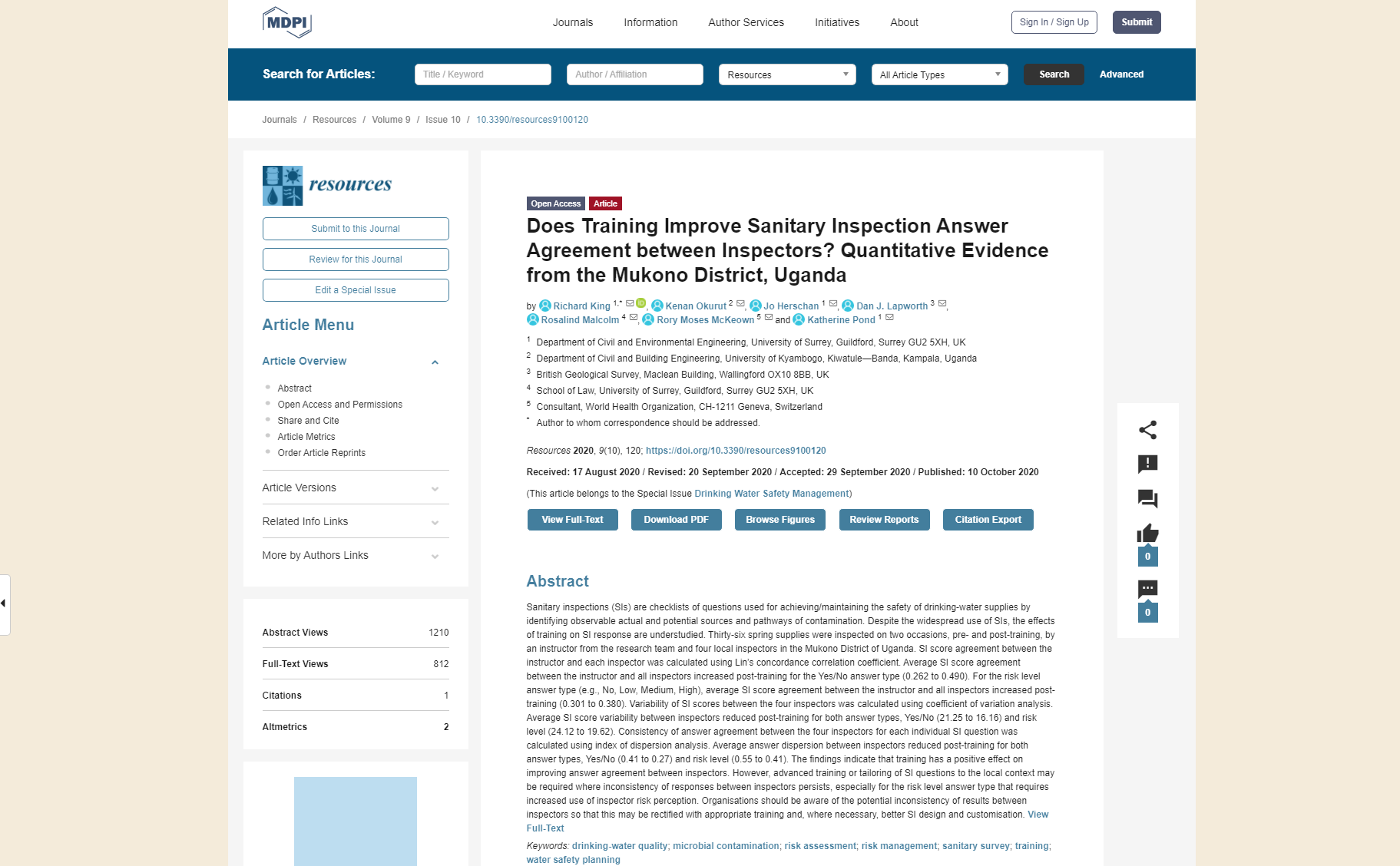| dc.contributor.author | Onyutha, Charles | |
| dc.contributor.author | Asiimwe, Arnold | |
| dc.contributor.author | Muhwezi, Lawrence | |
| dc.contributor.author | Mubialiwo, Ambrose | |
| dc.date.accessioned | 2022-03-09T08:11:12Z | |
| dc.date.available | 2022-03-09T08:11:12Z | |
| dc.date.issued | 2021-06-21 | |
| dc.identifier.citation | Onyutha, C., Asiimwe, A., Muhwezi, L., & Mubialiwo, A. (2021). Water availability trends across water management zones in Uganda. Atmospheric Science Letters, 22(10), e1059. https://doi.org/10.1002/asl.1059 | en_US |
| dc.identifier.issn | 1530-261X | |
| dc.identifier.uri | https://doi.org/10.1002/asl.1059 | |
| dc.identifier.uri | https://kyuspace.kyu.ac.ug/xmlui/handle/20.500.12504/829 | |
| dc.description | 14p. : ill ( Col) | en_US |
| dc.description.abstract | This study assessed trends in gridded (0.25° × 0.25°) Climate Forecast System Reanalysis (CFSR) precipitation, potential evapotranspiration (PET), and precipitation minus PET (PMP) across the four water management zones (WMZs) in Uganda including Kyoga, Victoria, Albert, and Upper Nile. The period considered was 1979–2013. Validation of CFSR datasets was conducted using precipitation observed at eight meteorological stations across the country. Observed precipitation trend direction was satisfactorily reproduced by CFSR data extracted at five out of eight stations. Negative (positive) values of long-term PMP mean were considered to indicate areas characterized by water scarcity (surplus). Areas with large positive PMP were confined to Lake Victoria and mountains such as Rwenzori and Elgon. The largest negative PMP values were in the arid and semi-arid areas of north and northeastern Uganda. The null hypothesis H0 (no trend) was rejected (p < 0.05) for increasing annual precipitation trends across the various WMZs except in the extreme eastern parts of the Upper Nile, Kyoga, and Victoria WMZs (or areas along the boundary of Uganda and Kenya). The H0 (no trend) was rejected (p < 0.05) for decreasing trends in annual PET over West Nile region of the Upper Nile, western parts of Victoria, and the Albert WMZs. For increasing trend in PMP, the H0 (no trend) was rejected (p < 0.05) across the various WMZs except around the Mount Elgon area. The study findings are relevant for planning of water resources management across the different WMZs in the country. | en_US |
| dc.language.iso | en | en_US |
| dc.publisher | Atmospheric Science Letters | en_US |
| dc.relation.ispartofseries | ;Vol.22 | |
| dc.relation.ispartofseries | ;No.10 | |
| dc.subject | Potential evapotranspiration. | en_US |
| dc.subject | Precipitation | en_US |
| dc.subject | Trend analyses | en_US |
| dc.subject | Water availability | en_US |
| dc.subject | Water management zones | en_US |
| dc.subject | Water scarcity | en_US |
| dc.subject | Uganda | en_US |
| dc.title | Water availability trends across water management zonesin Uganda | en_US |
| dc.type | Article | en_US |



